***Voting Is Open*** Please click here to vote for my entry, and go to the Contestants’ Page to explore and vote for other amazing entries!
This is my post for Challenge #2 in Project Food Blog. Thanks to all of you who voted to help me advance; I truly appreciate it! Voting opens Monday, September 27. I’ll post a voting link tomorrow in the hope that you’ll vote for me.
I tasted my first Indian food in 1990, and I fell in love. It’s surprising to me how readily I embraced the cuisine, especially since I was raised on a diet of straight-up Amurkin food spiced up only occasionally with an Amurkinized spaghetti and meatballs or a mild chili. So, when some friends invited me to try a new Indian place, they might as well have said, “Hey, let’s have Martian tonight.” I went along anyway, hoping that I would survive the experience. First up, crispy/crackly papadam served with a mint-cilantro chutney and some beautiful hot pickled onion. I swooned. Plump lamb samosas with tamarind sauce? I might have moaned with pleasure, just a little. For dinner, my friends suggested the chicken tikka masala, and I simply wanted to bathe in it. It was Quite the Evening. Give me a moment, won’t you?
Now I know that CTM isn’t even really a traditional Indian dish. That it was thrown together to satisfy the English need for Gravy during India’s long stint as a British Colony. It doesn’t make it any less wonderful, though.
But I’m not here to talk about chicken tikka masala. I’m here to talk about the Indian dish that has its own space on menus in Indian restaurants: Biryani. The name intrigues me, and I find that it’s derived from a Persian word meaning (depending on who you ask) fried-before-cooking or Yummy.
It’s touted as the meal of celebration and the dish of the Rich and Special. And while it’s definitely the former, it has its roots in a humble rice and goat meal that was cooked underground, like the original baked beans in the US. Except way older.
Because I try to follow rules All the Time, I delved into the history of biryani, and I came out with a head ache. Seriously. While everyone agrees that there is a Layering Process, some folks say to fry the rice before cooking; other folks say no. Many people on the Hinternets exhorted me to Always use rice as the bottom layer. An Indian chef told me–via video–to slap some raw marinated chicken in the bottom of the pan.
Fine. I popped an Excedrin and read on. There are two main types of biryani: raw and cooked. Don’t worry, though. I’m not going to make you eat biryani tartar. What these labels designate is how the meat is handled before being layered. Some use raw meat. Some use cooked meat. The whole trick of biryani, no matter whose recipe you follow, is to make sure that the rice is cooked just so–with all the grains separate.
There should be no clumping in biryani.
It seems to be a cardinal rule. To follow this rule, you have to undercook the rice by a certain degree and either a) have enough liquid in your raw marinated meat layer to finish cooking the rice perfectly while making sure your meat cooks all the way through or b) add a judicious amount of other liquid to ensure Rice Perfection at the end of the cooking process. “Is there a third option?” I asked the Hinternets, and the answer was a resounding no. Awesome.
I shifted gears for a minute and read up on rose water and kewra water. Some biryanis Contain these Items, and I wanted to use them in my version. Rose water is a by product of distilling rose oil for perfumes. It smells like you just fell face first into your grandmother’s bed of Damask Roses. Kewra water is made from the kewra, or screw pine, flower. It is also very fragrant, but has more of an herbal edge. Americans tend to use ingredients for their flavor. Indians like to use ingredients both for flavor and for aroma. And since the two are closely linked, it makes sense. The rose water and kewra water are both there to add flowery notes to the earthy, smoky, green perfume of the biryani.
When I actually started looking at recipes, and there was so much variation among them that I chose to take the Interesting Parts of several of them and combine them into one Frankenbiryani. Because I love you. And because, at its heart, biryani is all about technique. And you guys know how much I love a good technique. Teach me a recipe and I eat for a day; teach me a technique, and I eat for the rest of my life. I’m pretty sure that’s a real saying.
So, without further Ado, I present unto you my Franken Lamb Biryani.
My Lamb Biryani, Representative of Tons of Biryani Techniques*
For the Lamb
- 2 pounds lamb, cut into small pieces. I used chops and saved the bones for lamb stock.
- salt and pepper, to taste
- about 1 1/2 cups plain, full fat yogurt
- 2″ piece of cinnamon stick
- 2 black cardamom pods
- 4 green cardamom pods, or about 1/2 teaspoon of cardamom seed
- 2 Tablespoons fennel seed
- 1 Tablespoon cumin seed
- 1 Tablespoon coriander seed
- 1 teaspoon turmeric
- 1 Tablespoon Balti spice blend
- 1 Tablespoon onion oil
- 2 Tablespoons ghee (store bought or homemade)
Toast all the whole spices in a dry cast iron skillet until fragrant, about 4 minutes over medium heat.
Let the spices cool, and then grind them in a spice grinder or dedicated coffee grinder.
Salt and pepper the meat and put it in a large zip top bag.
Mix the ground spices with the turmeric, Balti and yogurt and pour into the bag with the lamb. Press out all the air and smoosh the bag around until the meat is evenly coated. Let marinate for 1 to 1 1/2 hours in the fridge.
Heat your skillet over medium heat, Add oil and ghee, and chuck the lamb and marinade in.
Cook until the lamb has released a lot of its juices and the marinade has thinned out quite a bit. Carefully pour off the marinade, reserving for later.
Continue to cook the meat until it is cooked all the way through. If any marinade is leftover in the pan, pour that off and reserve.
For the Onions
- 2 medium onions, cut in half down the equator and then sliced thin, longitudinally
- salt, to taste
- enough neutral vegetable oil to cover the bottom of your cast iron skillet by about 1/4″
Season the onions with salt.
Heat the pan over medium heat. Add the oil and heat until it shimmers.
Fry the onions over medium heat until starting to turn golden.
Turn up to medium-high and continue to fry until deeply caramelized.
Remove the onions to some paper towels to drain. If you have any onions that got a little too dark, pick them out. The darkest they should be is a deep mahogany.
Reserve the onion oil.
For the Rice
- 3 cups brown basmati rice
- water to cover by 2″
- a pinch of saffron threads
- water to cover the rice by 3″
- salt, to taste
- about 10 black peppercorns
- 2 Tablespoons ghee
- 2 Tablespoons onion oil
- 4 whole cloves
- 4 green cardamom pods, or 1/2 teaspoon cardamom seeds
- 1″ piece of cinnamon stick
Steep the saffron in a couple of tablespoons of very hot water for ten minutes.
Put the rice in a large pot. Pour over the saffron water and enough cool water to cover the rice by 2 inches. Let soak for 45 minutes.
Drain and rinse the rice and put back in the pan.
Add the rest of the ingredients, bring to a full rolling boil for about fifteen minutes.
The rice should be soft on the outside but crunchy on the inside. You should be able to see a thin halo of translucent cooked rice around an opaque core of uncooked rice. Drain thoroughly.
For the Aroma Waters (my favorite part)
Sweet Aroma Water
- 1 cup whole milk
- about 10 saffron threads
- 3 green cardamom pods or about 1/2 teaspoon cardamom seeds
- a splash each of rose water and kewra water (both are optional but add a lovely aromatic quality to the dish)
Warm milk to just steaming. Toss in the saffron threads and cardamom.
Let steep until room temperature.
When cool, add a splash each of rose water and kewra water.
Savory Aroma Water
- 1 cup water
- 2 bay leaves
- 2 black cardamom
- 10 black peppercorns
- 2″ piece of cinnamon stick
- 1 teaspoon salt (or to taste)
- 1 teaspoon fennel seed
Put all ingredients in a small sauce pan.
Bring to a boil and then let simmer for 20 minutes. Strain and cool to room temperature.
Additional Garnish
- 1 bunch of fresh mint
- 1 bunch of fresh cilantro
Putting It Together. Finally.
Preheat oven to 400F.
Brush a thin layer of ghee on the bottom and up the sides of your Baking Vessel.
Put 1/3 of the par-cooked rice in Said Vessel, spreading it evenly.
Sprinkle on about 2 Tablespoons each of the aroma waters.
Add 1/2 the lamb and drizzle over a couple of tablespoons of the reserved cooked marinade.
Add a handful of fried onions and a heavy sprinkle of chopped mint and cilantro.
Repeat the rice-waters-meat-marinade-onion-herb layers once again, and finish up with the last 1/3 of the rice.
Sprinkle on a little more of the aroma waters, a bit of onion and chopped herbs.
Seal the lid on the cooking vessel with the flour-water dough.
Bake at 400F for ten minutes, then reduce heat to 275F and bake an additional twenty minutes.
Remove Vessel from oven. Curse the day you decided to seal the pan with dough and chip it off with a dinner knife. Just concentrate on the seam between lid and pan. You can soak the rest off later. Curse again.
Let the fragrant steam hit you in the face, realizing that you couldn’t smell it before because of the dough seal. I mean, I forgot all about the cursing when the nutty-floral-earthy-smoky-meaty-herbal aroma reached my nose. Amazing. Simply amazing.
Gently fluff up the rice and mix the layers together with something that won’t smash your rice. I used a knife.
Serve with another sprinkle of chopped herbs, some raita and maybe some lovely crusty naan.
Oh yeah, I forgot. I also Ate. And the flavor? Very complex yet very subtle. No hot spiciness, just a wonderful melange of flavors, textures and aromas. Perfection. How about those rice grains? Any clumps? Nope! Might’ve been beginners’ luck, but I’ll take it.
Bonus–A Quick Raita
- 1 cup plain, full fat yogurt
- a large handful of seeded and finely diced cucumber
- salt and pepper to taste
- a handful of chopped mint and cilantro
Whisk together. Let sit in the fridge for half an hour to let the flavors blend.
*Biryani Techniques/Ingredients borrowed from India Curry, Show Me the Curry, iFood, and VahRehVah
**I lost count. At least 20. You’re welcome.
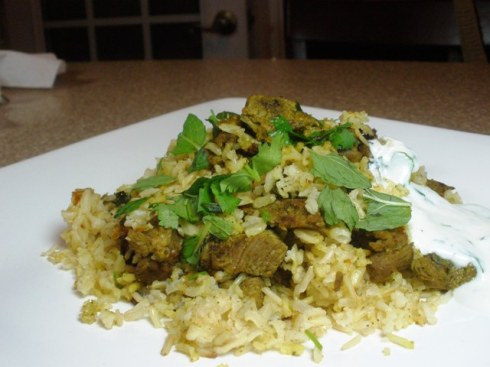
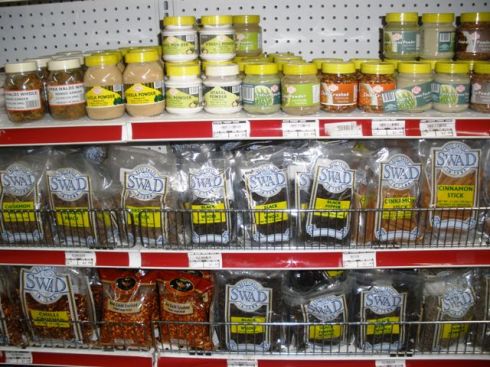

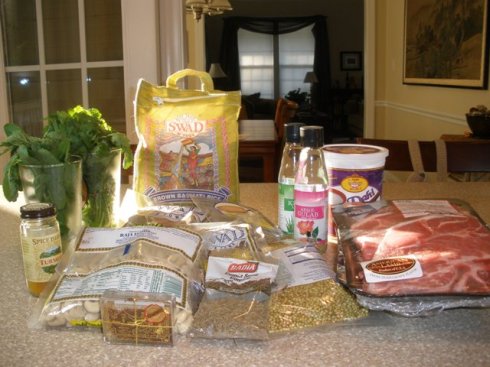
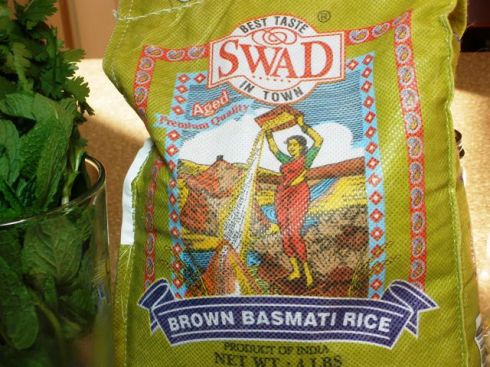
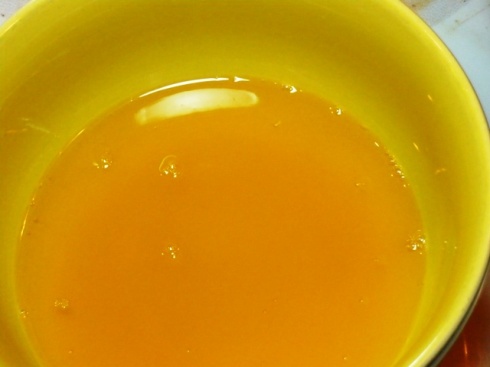
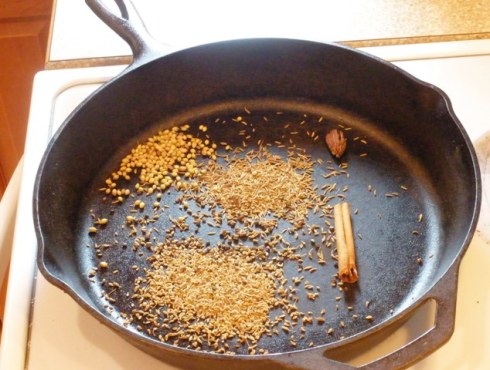
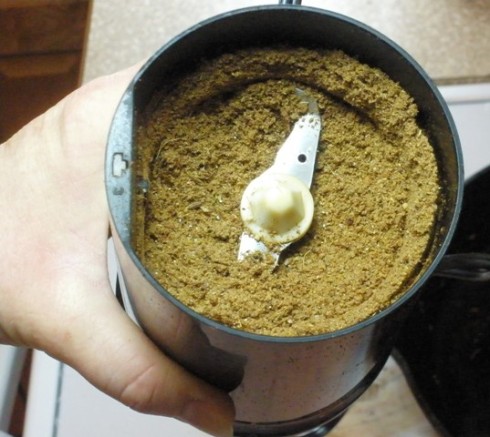
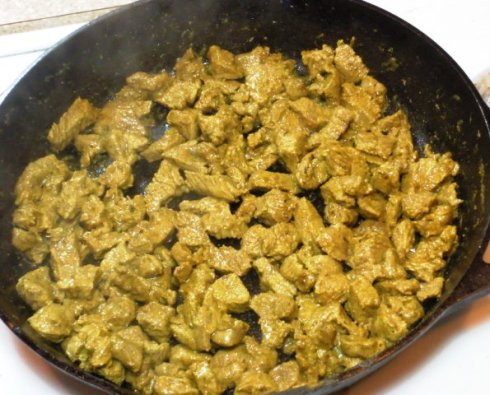
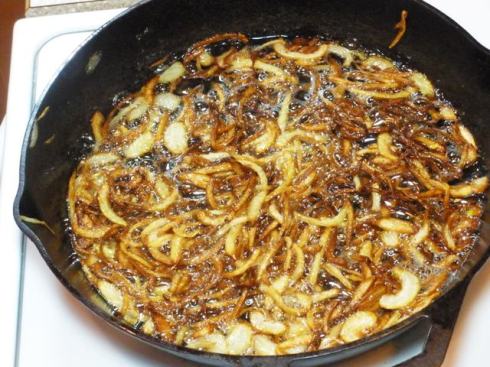
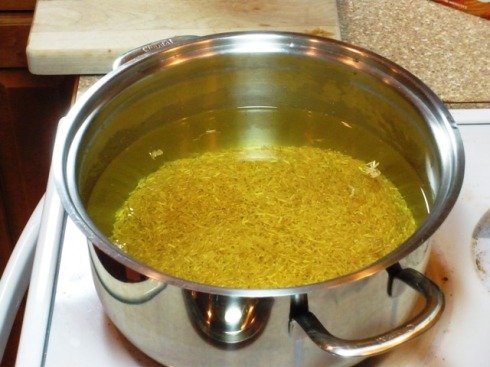
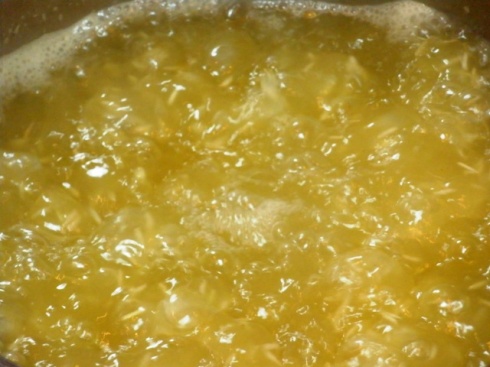
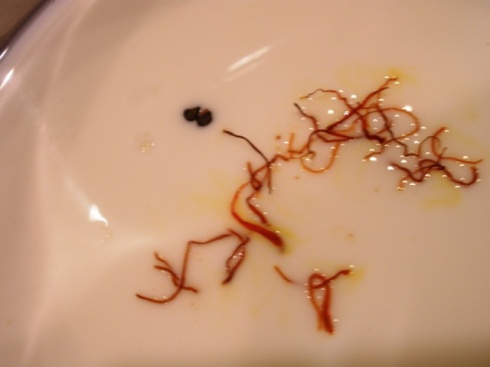
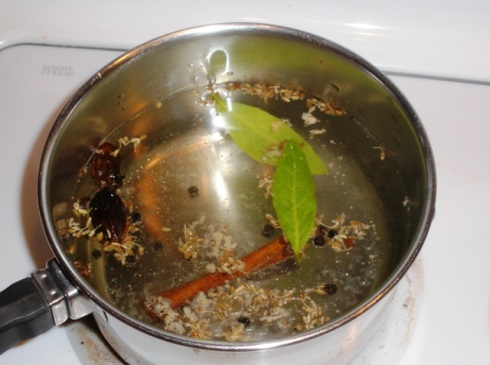
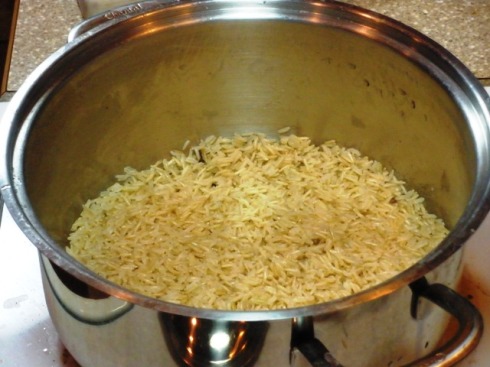
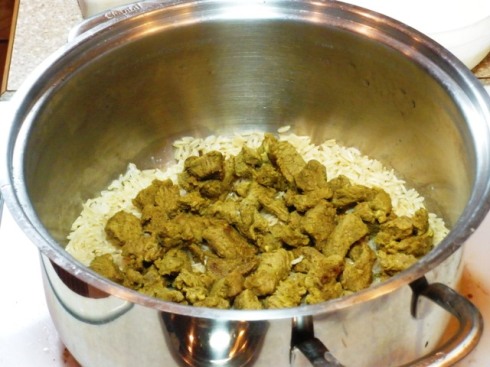
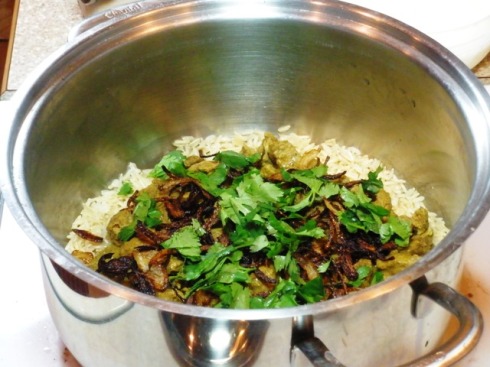
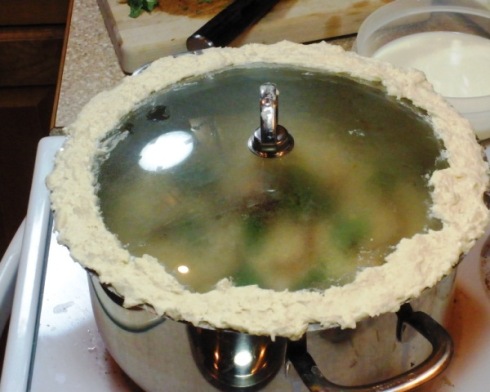
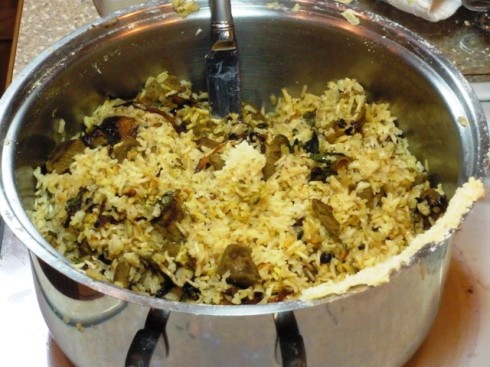
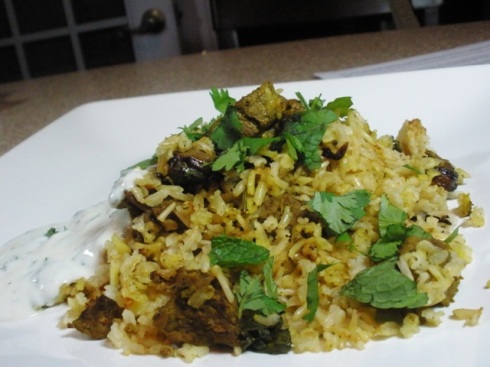
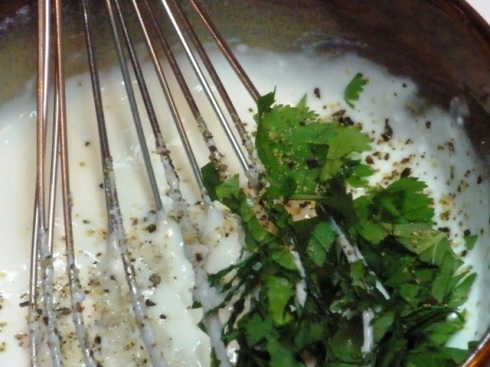









Recent Comments